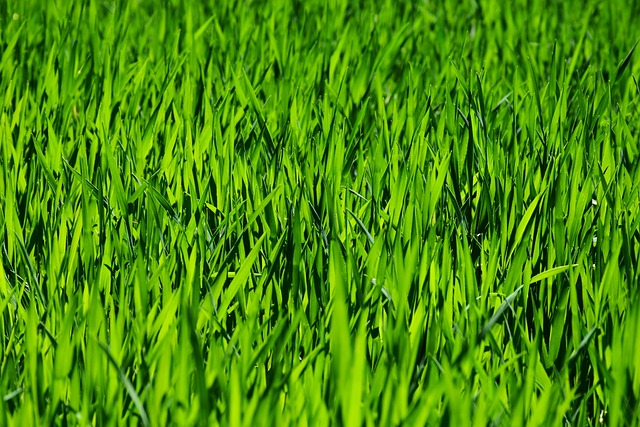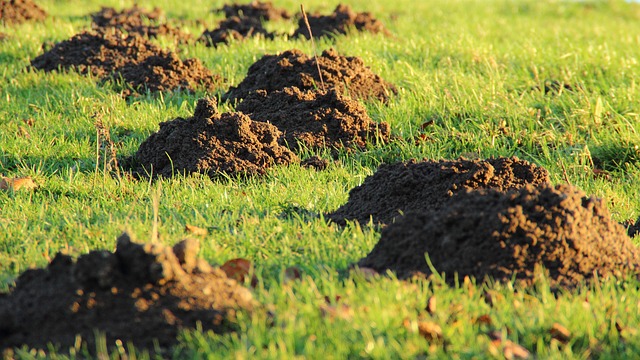Lawn Care and Landscaping require a detailed approach that focuses on tailored fertilization and strategic weed management for a healthy, weed-free lawn. Central to this is understanding the roles of nitrogen, phosphorus, and potassium in grass growth, and applying these nutrients in the correct proportions based on the type of grass and local climate. Optimal timing for fertilization is essential, with cool-season grasses like Kentucky bluegrass favored in fall and spring, and warm-season grasses like Bermuda grass best fertilized in late spring and early summer. Precision in application ensures efficient nutrient uptake and environmental protection. Integrated Pest Management (IPM) strategies should be employed for effective weed control, combining biological, cultural, and chemical methods. Regular monitoring and prompt interventions are key to maintaining a lush lawn throughout the year, with mowing at optimal heights and complementary landscaping practices enhancing the lawn's resilience and aesthetic appeal. By harmonizing fertilization with landscaping design elements, homeowners can achieve a robust, visually appealing lawn that exemplifies effective Lawn Care and Landscaping principles.
Maintaining a lush, vibrant lawn is a cornerstone of landscaping that enhances both home aesthetics and outdoor living spaces. This article delves into the intricacies of lawn fertilization and weed control, providing insightful strategies to ensure your lawn remains healthy year-round. We’ll explore the essential nutrients required for optimal grass growth, discuss effective weed control methods that complement your lawn care regimen, and outline how integrating landscaping practices can foster a thriving lawn environment. By understanding the science behind fertilization and proactive weed management, you’ll be equipped to cultivate a lawn that stands out in your neighborhood, contributing to the overall charm of your property.
- Understanding Lawn Fertilization: Key Nutrients and Timing for Optimal Growth
- Strategies for Effective Weed Control in Your Lawn Care Routine
- Integrating Landscaping Practices with Fertilization for a Thriving Lawn Environment
Understanding Lawn Fertilization: Key Nutrients and Timing for Optimal Growth

Engaging in lawn care and landscaping requires a strategic approach to fertilization, which is pivotal for maintaining a lush, healthy turf. Lawn fertilization involves supplying essential nutrients to your grass, primarily nitrogen (N), phosphorus (P), and potassium (K), as indicated by their proportions on fertilizer bags. Nitrogen promotes leaf growth, phosphorus aids in root development, and potassium enhances overall plant health. A balanced application of these nutrients ensures that your lawn receives the necessary components for robust growth.
Timing is critical when it comes to lawn fertilization. The optimal timing for applying fertilizer depends on local climate conditions and grass type. Generally, a cool-season grass like Kentucky bluegrass thrives with fall and spring feedings, while warm-season grasses such as Bermuda grass fare better with applications in late spring and early summer. Understanding the growth patterns of your turf grass allows for precise timing that maximizes nutrient uptake and minimizes waste or environmental harm. Adhering to a regular fertilization schedule, informed by seasonal changes and soil test results, is key to effective lawn care and landscaping practices. This approach not only fosters a lush, green lawn but also contributes to the health of the entire ecosystem within your landscape.
Strategies for Effective Weed Control in Your Lawn Care Routine

A robust lawn care and landscaping routine is essential for maintaining a lush, healthy lawn free from intrusive weeds. Effective weed control begins with a thorough understanding of your lawn’s specific needs, taking into account local climate conditions, soil types, and the species of grass and weeds present. Regular mowing at the correct height for your grass type can shade out many broadleaf weeds, reducing their growth and visibility. In addition to mowing practices, employing a well-timed fertilization schedule ensures that your lawn receives the necessary nutrients to outcompete weeds naturally. Fertilizers rich in nitrogen promote grass vigor, making it more resistant to weed invasion.
For targeted weed control, identify the types of weeds you’re dealing with and select appropriate herbicides. Pre-emergent herbicides applied in the spring and fall can prevent seed germination of annual weeds, while post-emergent treatments are effective for controlling established weeds. Integrated pest management (IPM) strategies combine biological, cultural, and chemical practices to manage weeds responsibly. This approach not only targets weeds effectively but also protects the environment and human health. Regular monitoring and timely interventions based on a well-planned lawn care and landscaping program can significantly reduce weed populations and keep your lawn looking its best throughout the growing season.
Integrating Landscaping Practices with Fertilization for a Thriving Lawn Environment

A robust lawn care and landscaping regimen that integrates strategic fertilization practices can significantly enhance the health and aesthetics of your lawn environment. By adopting a holistic approach, one can create a thriving ecosystem that supports lush grass growth while effectively managing weed pressure. Fertilization is a cornerstone of this approach; it provides the necessary nutrients for grass to thrive, fostering a dense turf that naturally crowds out weeds. Optimal lawn care involves selecting the right type and amount of fertilizer based on soil composition, local climate conditions, and grass species. For instance, cool-season grasses benefit from fall and early spring applications, while warm-season varieties fare best with fertilization during late spring and summer months. Landscaping practices such as proper mowing height, aeration, and over-seeding also complement fertilization efforts, ensuring that the lawn’s root system is robust and the grass plants are vigorous enough to outcompete weeds. Additionally, integrating landscape design elements like mulch borders, groundcovers, and varied plantings can further support a healthy lawn by reducing shade and soil compaction issues that might otherwise lead to turf decline and weed infestation. By combining thoughtful fertilization with effective landscaping techniques, homeowners can achieve a resilient and visually pleasing lawn that stands as a testament to the harmony of natural beauty and scientific lawn care.
In conclusion, a thriving lawn is a harmonious blend of thoughtful lawn care and strategic landscaping practices. By understanding the key nutrients required for optimal grass growth and timing fertilization applications, homeowners can ensure their lawns receive the necessary sustenance to outshine weeds naturally. Effective weed control, when integrated with a tailored fertilization program, not only enhances the aesthetic appeal but also promotes a healthier, more resilient lawn. Landscaping in tandem with these practices can further amplify your efforts, creating an outdoor space that is both beautiful and environmentally sound. Investing in quality lawn care and landscaping services, or equipping yourself with the right knowledge and tools, will yield a lush, green lawn that stands as a testament to careful stewardship and attention to detail.


